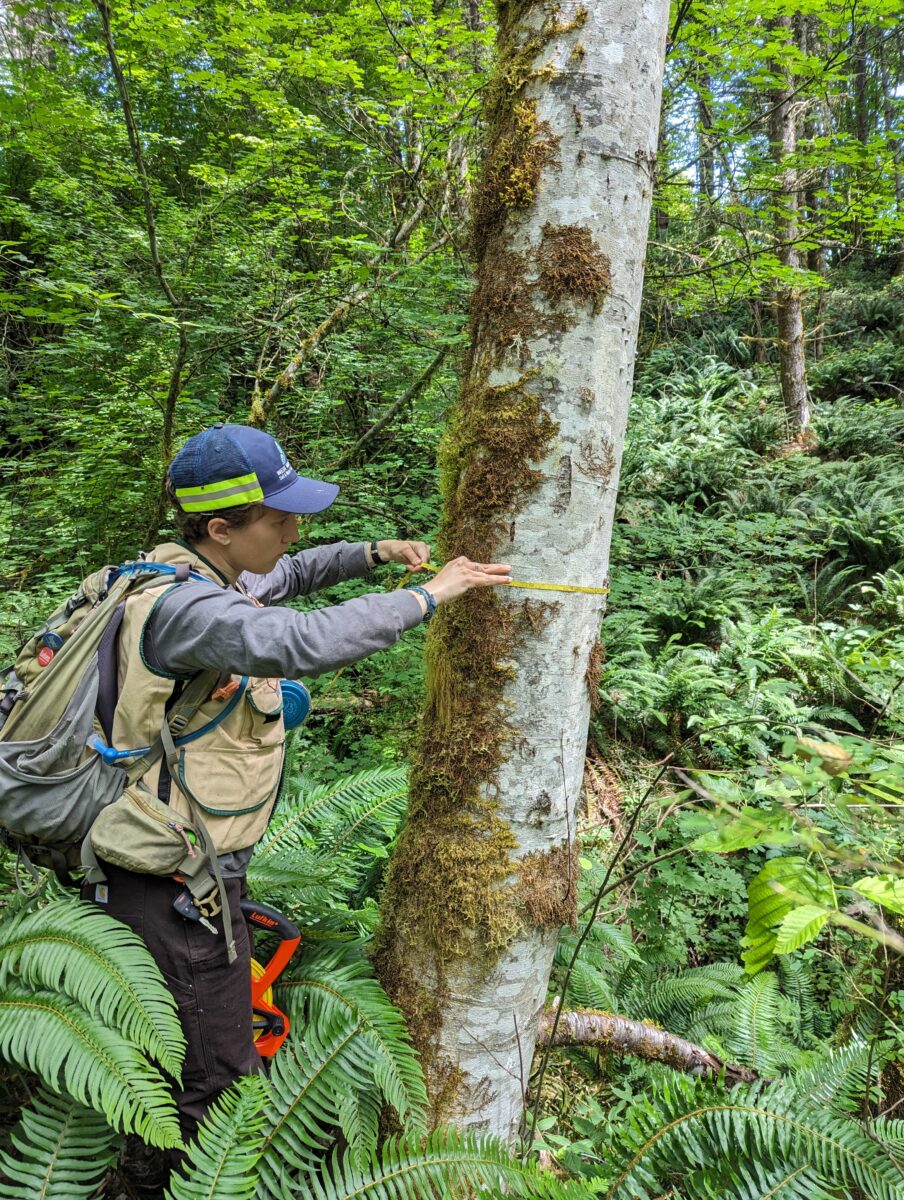by Kammy Kern-Korot, senior conservationist
Have you seen a previously healthy tree or sapling seemingly fried to a crisp by days of stifling heat? Then you’ve already seen how extreme weather, made worse by climate change, is affecting nature in our district.
Dangerously high temperatures and increased precipitation and some severe flooding are all well-studied effects of climate change. District residents may even witness one or all in a given year. Unfortunately, extreme events compound a loss of the area’s tree canopy, and the social and ecological benefits trees provide.
One of the strategic priorities of WMSWCD, as identified in our 5-year Long Range Business Plan, is adapting to and mitigating the effects of climate change in our conservation practices.

It’s Getting Hot in Here
Increasingly hot, dry summers are causing severe stress to many of our native tree species. Particularly affected species in the Willamette Valley include grand fir, red alder, black hawthorn and western red cedar, which are temperate forest species and are more adapted to moist and cool conditions. The Willamette Valley’s Mediterranean trees species that appear to be suffering less from our now more common droughtDrought A longer than normal time with not enough rain and heat conditions are Oregon oak, Oregon ash, bigleaf maple, and white alder. In the last several years, some people choosing plantings have favored Oregon oak because of its resistance to drought—it is considered hardy and resilient in the face of climate change. Its long tap root seeks water deep under the surface in times of water shortage.
Unfortunately, Oregon oak and Oregon ash are being negatively impacted by the arrival of the emerald ash borer (EAB) and the Mediterranean oak borer in Oregon. EAB and MOB are already living in neighboring counties, on the doorstep of our district. Given the multiple stressors on many of our commonly planted tree species, we have begun expanding our planting palette to include species with a more southern range that are showing more resilience to warmer temperatures, such as white alder. White alder is native to the Willamette Valley, but is more common further south. Our conservationists hope that the white alder will succeed in places where Oregon ash currently grows but is under threat by the EAB.
This past year, we made a big investment in white alder. We:
- Reached out to landowners who already have ash or had suitable habitat, and
- Gave away a total of 255 white alder seedlings to 14 landowners, including four Multnomah Channel moorages.
- Planted 3, 370 more seedlings at 22 additional sites with the help of paid contactors and our own staff.
We are also sourcing local species from further south. An example is Ponderosa pine, which we historically sourced exclusively from the Willamette Valley. This year we sourced some from southern Oregon—where it hotter and drier. We hope these may survive better in future hotter summers.
The Importance of Trees
We recognize the huge importance that trees have for our communities and the air we breathe. Trees cool and shade us and our streams from the hot sun and improve our health and well-being. They also store a vast amount of carbon that would otherwise be in our atmosphere, further increasing the rate of climate change. According to a 2018 study in the scientific journal Nature, the world’s vegetation stores about 450 billion tons of carbon, which is roughly the amount of carbon humans release into the atmosphere over 50 years at current rates of emissions. People can increase carbon storage by planting more trees and preserving and enhancing more natural habitat. That’s why we continue to restore habitat and emphasize the importance of adding more trees and native plants to the landscape. This past year, we planted 8,000 native trees and shrubs on multiple private properties.
Learning for the Future
As part of our climate change-related goals, we’re learning more about “climate-smart conservation” and how much carbon restoration projects sequester. In September 2023, we collaborated with a Nature Conservancy (TNC) researcher to survey and inventory selected areas of two mature riparianRiparian areas The land alongside a stream, creek, river, or floodplain projects we had implemented in our service area. Soil samples and measurements of the woody biomass above and below the ground were collected and are being analyzed to measure the amount of carbon they stored.
Additionally, we have been exploring tools such as iTree and the Natural Resources Conservation Service’s COMET-Planner which assess the benefits to greenhouse gas(GHGs) reductions of retaining and planting trees. According to COMET-Planner, a conservation project that converts a grassy area to woody plants will store 16 to 18 tons of carbon dioxide per acre. We are eager to see these tools further developed, including for estimating GHG benefits of soil health practices, and for the results of the TNC study to be published in the next year. Armed with such data, we can better understand and communicate the climate benefits of the conservation work we do.